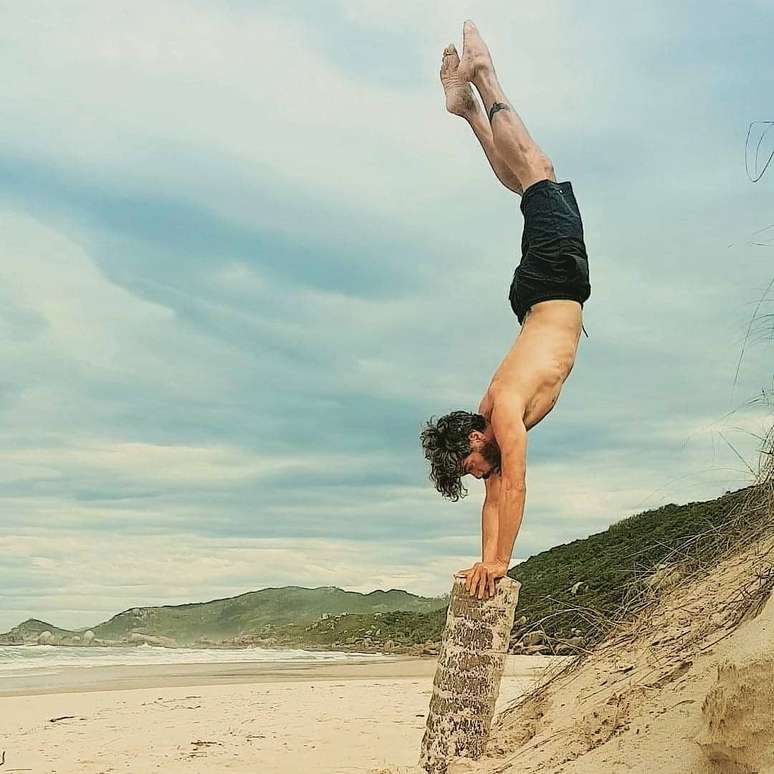Nil Marino is 60 years old and has surprised the Internet by showing off a toned body; see your favorite exercises
Model and actor Nil Marino, 60, gained Internet fame last week when he went viral thanks to his well-defined physique. Nil is a rhythmic gymnast and has a dedicated routine to boast an enviable body. On his Instagram he often posts his workout routine.
Even though I have owned a gym for many years, I have never liked doing weight training, I have always liked training at home or on the beach with my rhythmic gymnastics exercises”, says Nil Marino.
He says he enjoys doing sets of sit-ups at home, as well as practicing various exercises on the rings and Pilates ball. But it’s not just exercise that keeps him fit. “In my routine I have been following a very natural diet for many years and I always prepare my own food. I was a vegetarian for a while, then I started eating eggs and today I eat meat, but I have never abandoned my natural habits”, he highlights.
He says fried foods are rarely on his menu. “But I’m not a saint, am I? Every now and then I eat a kibbeh or something, but it’s really very rare. I haven’t had soda since 1995, for example.”
Calisthenics for training anywhere
Rhythmic gymnastics is a great way to strengthen muscles. The technique is versatile and can be performed anywhere, as it does not require the use of equipment, discs or dumbbells: just with your body weight you can work all the muscles.
Calisthenics is very versatile in terms of places to train. At home you can use chairs, sofas and stable objects to perform some exercises”, explains coach Júnior Britto, teacher of physical education, artistic gymnastics and functional training.
Thanks to this versatility, Nil has been betting on rhythmic gymnastics for years. “I discovered calisthenics in college, I’m a retired physical educator. I started doing it in 1983, my first semester of college and I really liked it. I thought, ‘Wow, I don’t even need to go to the gym.’” . Because in calisthenics you train with your body weight, right? And it’s fantastic! So I’ve always liked calisthenics,” she explains.
In fact, calisthenics can be done at home, on calisthenics equipment in parks and squares and even in a gym with bars. “The best thing is this the only equipment really needed is body weight!”, says Júnior Britto
Different levels of difficulty in rhythmic gymnastics
Like any other sport, rhythmic gymnastics has different levels of practitioners, from beginner to advanced. People just starting out will discover the benefits of calisthenics training with simpler exercises, such as squats, sit-up variations, and push-ups. Advanced athletes, like Nil, tend to add difficulty to practice with a few different variables.
I ended up developing more calisthenics on rocks and stumps. It’s funny to say, but I like to challenge the balance. Calisthenics is amazing, I like climbing on the edge of the rock, on the edge of the log and then I do some turns, I use isometry a lot,” says Nil.
These examples provided by the model and the actor are really important ways to add difficulty to the exercises. When you add, for example, balance to an exercise, other skills will be trained in addition to the muscles themselves, such as the development of balance itself, flexibility and mobility.
“In rhythmic gymnastics it is possible to train all muscle groups, but there are not as many isolated exercises as in bodybuilding,” adds coach Júnior Britto. As with other activities, such as weight training, calisthenics must be practiced three to four times a week for its benefits to be noticeable. Seeking professional guidance, however, is essential, as performing incomplete movements or with incorrect posture can cause injury.
“I have trained every day of my life since I was a child, when I would swim, go clubbing and then do other sports. So there is a lot of physical activity in my veins,” says Nil, explaining the reason for his good form.
Rhythmic gymnastics exercises to get you started
Nil explains that the basis of his muscle strengthening comes from constantly doing a lot of push-ups, one of the most common calisthenics exercises. “I’ve always liked doing it on rocks. I’d prefer a rock that’s more inclined or sloping, more open, more closed. In short, lots of push-ups. Biceps, triceps, all through push-ups, even lots of squats.”
For Nil, an advantage of calisthenics is that it offers possibilities for global strengthening of the body, since each exercise also involves the contraction of muscles that are not the main ones in a given exercise.
“Calisthenics is like this, all the muscle groups in action. Any movement I do I have to have everything contracted. If I have the lower limb without any contraction I can’t do the movement. And you have to have a lot of abdominals, right? That will be the basis” , he adds.
Below, we have selected 7 rhythmic gymnastics exercises to start your training. Watch!
1. Free front squat
This variation is the simplest and most traditional and provides a complete movement. It can be done at home, without the use of weights, focusing only on the complete movement. If you find it easy, use isometry, keeping your knees bent and fixed at 90 degrees for a few seconds before performing the full movement.
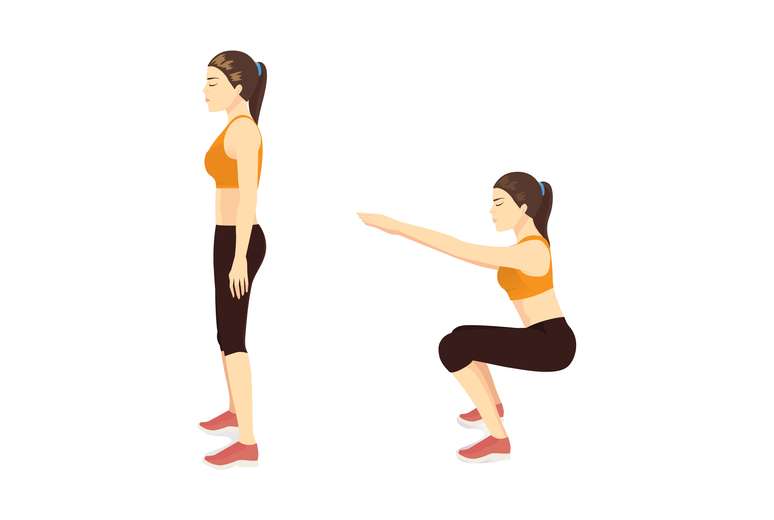
two. I lunge
In these types of squats the exercise is performed unilaterally, that is, with only one leg in front and the other behind. While the front one flexes, the rear one serves to provide balance. It requires more balance and can offer a more targeted workout to develop your thigh muscles.
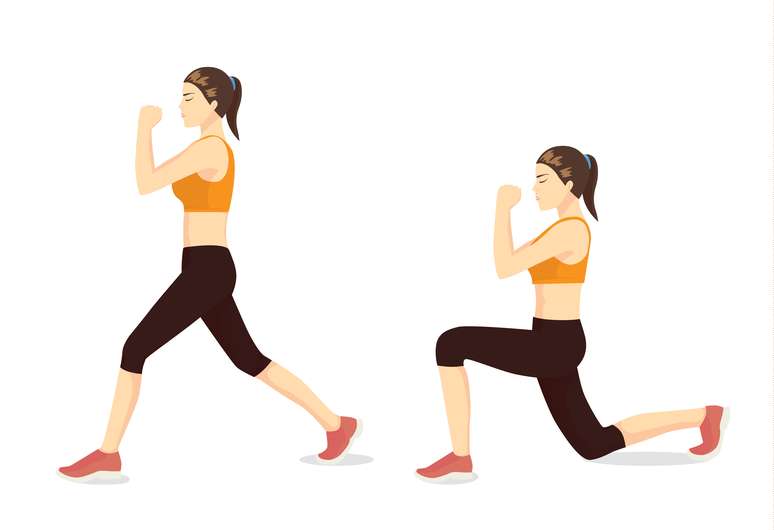
3. Traditional push-up
Here, without support for the knees, the difficulty increases. This exercise is one of the most used to strengthen the pectoral and triceps muscles, but it also activates the shoulder muscles.
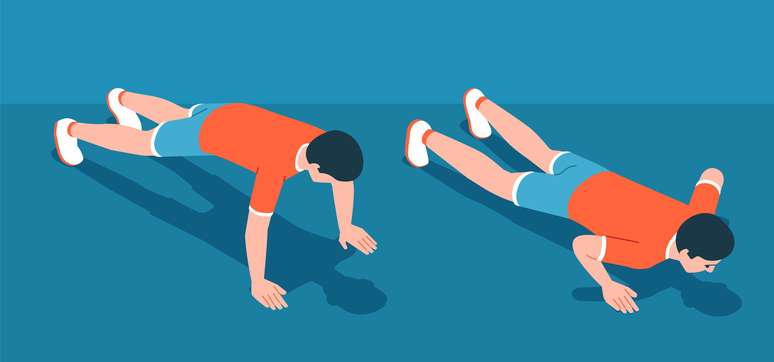
4. Inclined push-ups
You can rest your feet on a fixed bench or any elevated object, keeping your body inclined to the floor. This movement works primarily the upper chest and also the triceps, in addition to the shoulders.
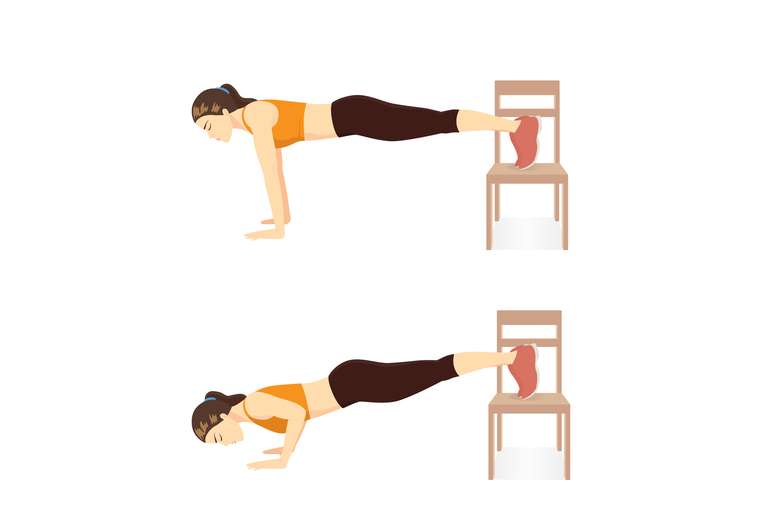
5. Fixed bar
The pull-up bar can be done with different grips and arm widths. Bars are generally found in parks or can be purchased and attached at home. The wider grip, with the hands facing forward, stimulates the back muscles more, but the biceps are also activated.
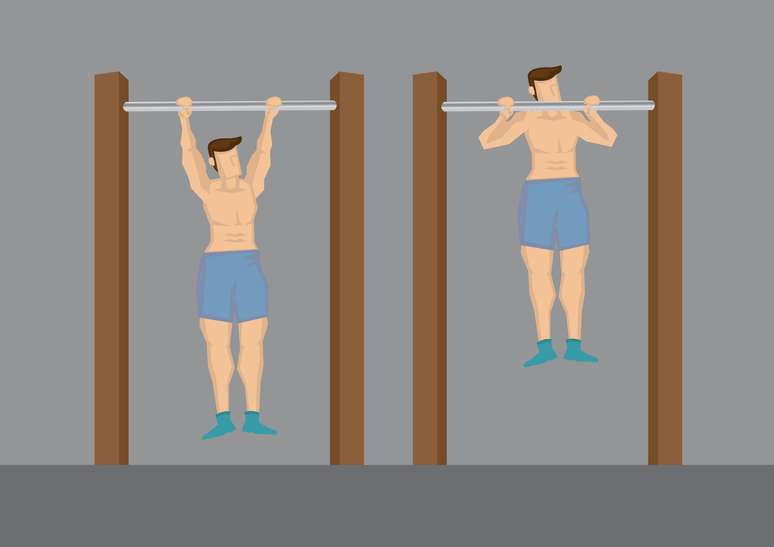
6. Australian pull-up (bar row)
The movement is similar to that of the fixed bar, but closer to the ground. The body is in a more horizontal position and the legs are resting on the floor. Use an open, overhand grip (palms facing out). The movement can be carried out, for example, on a very solid table.
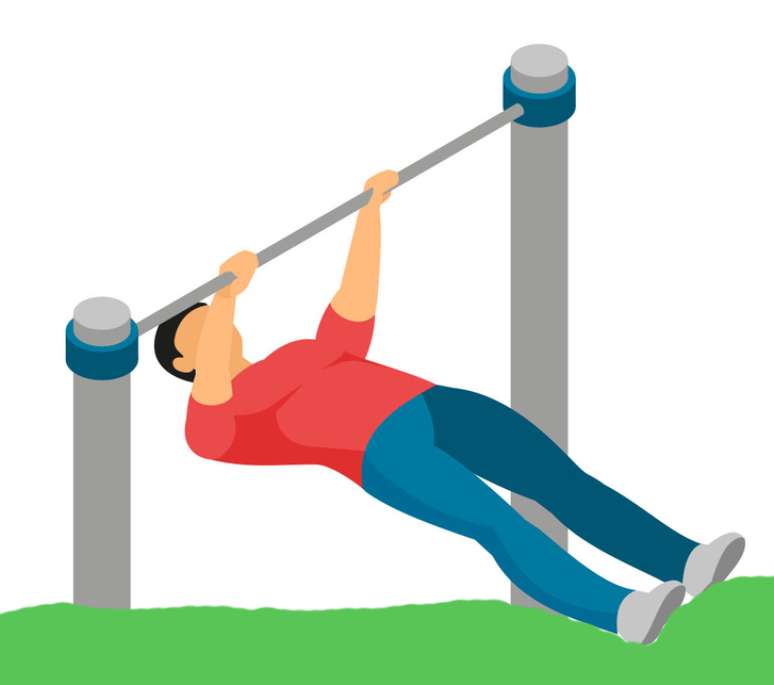
7. Climber
In the climber, the person must place both hands on the ground and remain in the traditional plank position. However, you will have to perform a movement alternating the position of your legs, as if you were climbing a mountain, alternately bringing your knees to the height of your abdomen.
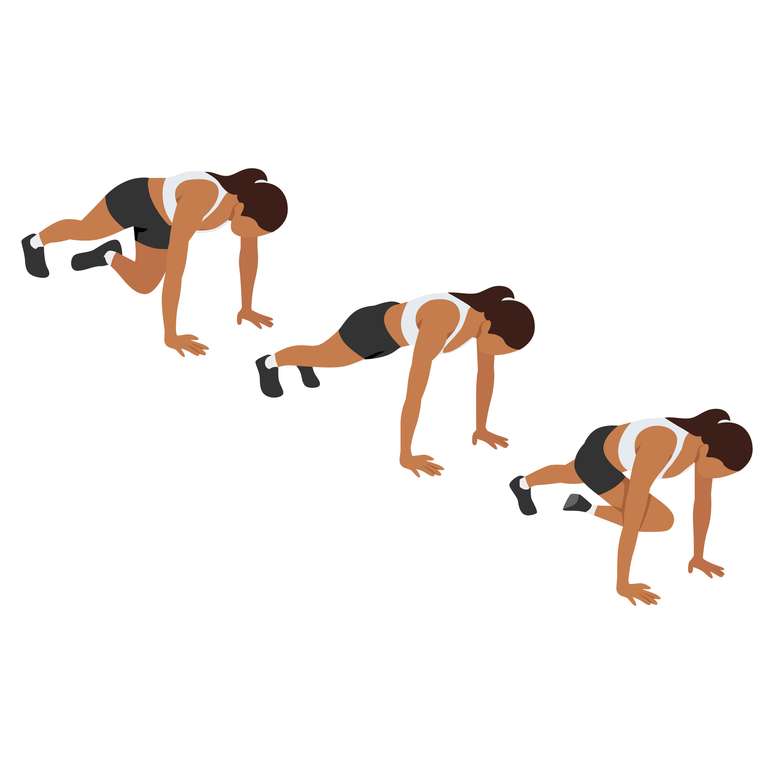
Source: Terra
Rose James is a Gossipify movie and series reviewer known for her in-depth analysis and unique perspective on the latest releases. With a background in film studies, she provides engaging and informative reviews, and keeps readers up to date with industry trends and emerging talents.

